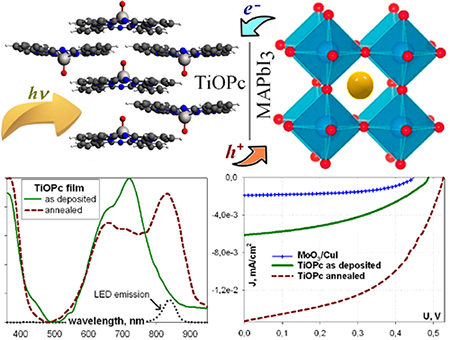Журнал "Макрогетероциклы"
Navigation
News
Impact Factor 2021 = 1.200 has been issued by ISI Web of Knowledge (JCR 2021).
Search
ISSN 1998-9539
NIR Photoresponse of Perovskite Solar Cells with Titanyl Phthalocyanine
Vlad V. Travkin, Anton N. Fedoseev, Yury I. Sachkov, and Georgy L. Pakhomov@
Institute for Physics of Microstructures of the Russian Academy of Sciences (IPM RAS), 603950 Nizhny Novgorod, Russian Federation
@Corresponding author E-mail: pakhomov@ipmras.ru
DOI: 10.6060/mhc190448p
Macroheterocycles 2019 12(2) 198-201
The effect of titanyl phthalocyanine TiOPc in the methylammonium lead triiodide (MAPbI3) perovskite based solar cells is studied. The photovoltaic output of cells at low intensity illumination with lmax= 840 nmis greatly enhanced when using TiOPc as a NIR-absorbing hole conductor. Compared to the reference cells with a standard cuprous iodide CuI as a hole-transporting layer, the photocurrent increases by a factor of 15, so that the narrow-band power conversion efficiency (PCE) exceeds 2 %. It should be pointed out that the irradiation wavelength lies beyond the intrinsic absorption of MAPbI3 or any other material in the device scheme except TiOPc. The improvement is associated with the photoactivity of TiOPc molecules in the near infrared region due to the largely splitted Q-band, as confirmed by the dependence of parameters on the polymorph transition in the TiOPc films.

| Attachment | Size |
|---|---|
| mhc190448p.pdf | 1.38 MB |
| mhc190448p_supp.pdf | 3.01 MB |
- 1461 reads
- Русский
